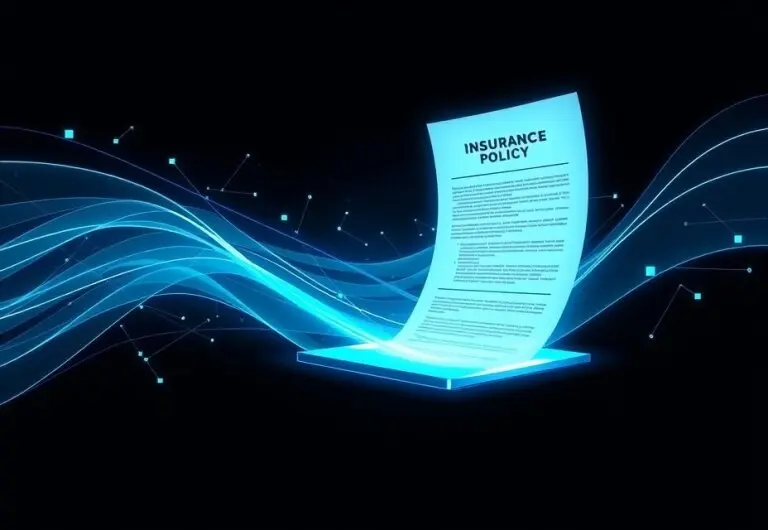A Step-by-Step Guide to Automating Your Insurance Renewal Process

Tired of manual insurance renewals? Our step-by-step guide shows how to automate the entire process, from data centralization to workflow setup, saving time, cutting costs, and boosting client retention.
Introduction: The High Cost of Manual Renewals
For insurance agencies, the renewal process is the lifeblood of the business. Yet, many are trapped in a cycle of manual, time-consuming tasks: chasing down data across spreadsheets, sending reminder emails one by one, and manually generating documents. This outdated approach is not just tedious—it’s costly, error-prone, and hampers growth .
The solution lies in automation. By implementing an Insurance Renewal Management System, agencies can transform this administrative burden into a strategic advantage. This guide provides a clear, actionable roadmap to transition from a reactive, manual renewal process to a streamlined, automated workflow that saves time, improves accuracy, and enhances client relationships .
The Pitfalls of the Manual Renewal Process
Sticking with manual methods and disconnected spreadsheets creates significant business challenges:
- Data Silos and Errors: Critical client and policy information is often scattered across emails, paper files, and multiple digital folders. Manually re-entering this data for renewals is highly prone to human error, which can lead to serious compliance issues or incorrect policy terms .
- Inefficiency and Lack of Scalability: The administrative burden of tracking renewal dates, sending communications, and preparing documents for each client does not scale. As your book of business grows, these processes consume exponentially more resources, forcing you to add overhead instead of focusing on growth .
- Poor Client Experience: In a manual system, it’s difficult to provide proactive, personalized service. Clients may receive generic communications or, worse, be missed entirely. This lack of engagement can lead to lower client satisfaction and retention rates .
Why Automate? The Transformative Benefits
Shifting to an automated renewal management system delivers tangible benefits across your agency:
- Dramatically Increased Efficiency: Automating routine tasks like data collection, document generation, and communication workflows frees up your team to focus on high-value activities like client advisory and new sales . A modern system can save considerable time by automating notifications, tracking completion status, and checking for data errors .
- Enhanced Accuracy and Compliance: Automation centralizes all policy and client data into a single source of truth . This reduces manual entry errors and provides a clear audit trail, showing what information was changed, when, and by whom—a feature close to impossible with spreadsheets .
- Superior Client Service and Retention: Automation allows you to keep policyholders informed and engaged through regular, personalized updates and prompt service . With self-service portals, clients can access their information 24/7, leading to higher satisfaction and loyalty .
Your Step-by-Step Guide to Automation
Ready to make the shift? Follow these five steps to implement a robust, automated renewal management system.
Step 1: Centralize Your Data Foundation
The first step is to break down data silos. An effective system will integrate with your other channels and internal systems, consolidating all client, policy, and risk exposure data into one centralized platform . This eliminates the need for manual data re-entry, ensures data robustness, and gives your team easy, web-enabled access to the information they need .
- Action Item: Audit where your current client and policy data resides (CRMs, spreadsheets, carrier systems, emails) and choose a solution that can integrate these disparate sources.
Step 2: Design and Automate Renewal Workflows
This is the core of automation. Map out your renewal timeline—from initial data collection to final document delivery—and use the system to create automated workflows.
- Questionnaire Distribution: Automate the distribution of renewal questionnaires with built-in notifications and reminders to ensure timely completion .
- Task and Deadline Management: Automatically assign tasks to team members and set reminders for key milestones, ensuring nothing falls through the cracks.
- Communication Cadence: Set up automated, personalized email or SMS sequences to keep clients and internal stakeholders updated at every stage of the process .
Step 3: Implement Proactive Tracking and Alerts
Move from a reactive to a proactive stance. A powerful automation feature is the ability to track the status of all renewals in a single dashboard and receive alerts for required actions .
- Action Item: Configure your system to provide real-time visibility into which renewals are on track, which are pending client input, and which require your immediate attention.
Step 4: Enable Self-Service and Client Portals
Empower your clients and reduce your team’s administrative load. A key feature of modern systems is a self-service portal where clients can view their policy documents, submit updates, and access information 24/7 . This provides convenience for the client and significantly reduces routine inquiries to your staff.
Step 5: Integrate, Analyze, and Refine
For maximum efficiency, ensure your renewal management system can integrate seamlessly with other critical software, such as your CRM, accounting tools, and carrier platforms . Finally, use the system’s reporting and analytics tools to track performance metrics, identify bottlenecks in your new process, and continuously refine your approach for even greater efficiency .
Manual vs. Automated Renewals: A Side-by-Side Comparison
| Feature | Manual Process | Automated System |
|---|---|---|
| Data Management | Fragmented across spreadsheets and emails | Centralized in a single, secure system |
| Communication | Manual, slow, and prone to being missed | Automated, personalized workflows with reminders |
| Error Risk | High, due to manual data entry | Low, with reduced manual intervention |
| Client Experience | Reactive and often generic | Proactive, personalized, with self-service options |
| Audit Trail | Difficult or impossible to maintain | Clear records of all changes and actions |
| Team Focus | Overwhelmed by administrative tasks | Freed for strategic advice and sales |
Introducing IMD.Mitra’s Insurance Renewal Management System
While the steps above provide a general framework, the right technology platform is what makes true automation possible. IMD.Mitra’s Insurance Renewal Management System is built specifically to execute this automated workflow from end to end.
Our system goes beyond basic reminders to offer:
- Template-Free Data Extraction: Leveraging the AI from our Policy Reader Parser feature, our system can intelligently extract and structure key data from renewal documents, regardless of their format.
- Seamless Ecosystem Integration: Our platform is designed to integrate smoothly with your existing agency management systems, carrier portals, and communication tools, creating a unified operational environment.
- Intelligent, Actionable Analytics: We provide deep insights into your renewal portfolio performance, helping you identify retention risks and upsell opportunities with data-driven precision.
Frequently Asked Questions (FAQ)
Q1: Is automating insurance renewals only beneficial for large agencies?
A: Not at all. Agencies of all sizes benefit from automation. For smaller agencies, it’s a force multiplier that allows them to compete with larger players by operating more efficiently and delivering a superior client experience without adding overhead .
Q2: How secure is our client data in an automated system?
A: Reputable systems are built with robust security as a core feature. This includes multi-factor authentication, data encryption, detailed audit logs, and compliance with regulations to protect sensitive client information .
Q3: Can an automated system handle complex or unique client renewal scenarios?
A: Yes. Modern systems are designed for flexibility. They allow for customizable workflows and task management, ensuring that even complex, high-touch client renewals can be managed efficiently within the automated framework, with human oversight where needed.
Q4: What is the first step to getting started with automation?
A: The best first step is to conduct an internal review of your current renewal process. Identify the biggest pain points—whether it’s data collection, communication, or deadline tracking. This will help you clearly define your requirements when evaluating an automation solution like IMD.Mitra.
Conclusion
The transition from manual to automated insurance renewal management is no longer a luxury for forward-thinking agencies; it’s a necessity for sustainable growth. By centralizing data, automating workflows, and leveraging self-service tools, you can eliminate costly errors, dramatically improve operational efficiency, and—most importantly—strengthen relationships with your clients.
Ready to stop drowning in paperwork and start scaling your agency? Contact us today to schedule a personalized demo of IMD.Mitra’s Insurance Renewal Management System and see how effortless renewals can be.




